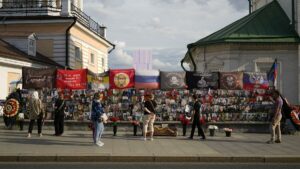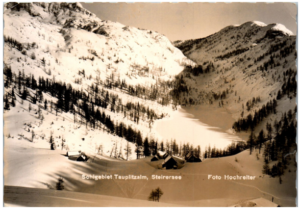Tunisia: is Democracy There Being Destroyed?

Tunisia is the only country which overthrew an authoritarian ruler during the 2011 Arab Spring and went on to build a democracy.
However, the raiding of the headquarters of the opposition Ennadha party and arrest of its leader indicates that the country is being taken back to an illiberal form of rule, critics say.
How did Tunisia build a democracy after the Arab Spring?
In January 2011, Zine al-Abidine Ben Ali resigned as Tunisia’s president and fled to Saudi Arabia, after failing to quell weeks of mass protests.
He had ruled the country as a one-party state for 23 years.
The incoming “transitional government” allowed new political parties, and free speech.
Several elections were held, in which the moderate Islamist party Ennahda (Rennaisance) gained the most parliamentary seats but never won a majority. It had to share power with secular parties.
“After the revolution a new consensus emerged, in which the Islamist party and the secular ones agreed to work together to create new democratic institutions,” says Riccardo Fabiani of the think tank, the International Crisis Group.
The parties put a new constitution in place, which gave new powers to Tunisia’s parliament – the National Assembly – and gave democratic rights to citizens.
However, Melek Saral of SOAS, University of London, says the politicians failed to agree on how to set up a constitutional court.
“The court was needed to provide checks and balances on the government, and to guarantee human rights,” she says.
“Not getting an agreement on the constitutional court was one of the main failures when setting up the democratic system.”
The politicians who ruled after 2011 also failed to improve economic conditions and to create jobs, eroding people’s faith in their new form of government.
A Pew Research Center poll suggests that while 70% of Tunisians supported democracy in 2012, only 48% still did in 2014.
“People expected democracy automatically to bring economic growth,” says Intissar Fakir of the Middle East Institute. “When it didn’t, they thought that democracy hadn’t paid.”
How did President Kais Saied come to power?
Kais Saied was an expert in constitutional law who won the presidency by a landslide in 2019.
He said in his campaign that the democratic system was not working because the political parties in parliament had too much power.

“”He pointed to himself as the man who could take the reins when everyone else was incompetent and corrupt,” says Dr Yerkes of the Carnegie Endowment for International Peace.
In 2020, the Covid pandemic severely damaged Tunisia’s economy and overwhelmed its health services.
“It caused a near collapse of state institutions,” says Mr Fabiano, “and many people thought the presidency needed to be strengthened to take vital decisions.”
In 2021, Mr Saied exercised emergency powers to sack the prime minister, close the National Assembly and suspend the constitution.
He said he was acting to “save the state” – a message which resonated with many Tunisians.
How did President Saied reverse democratic reforms?
After this he passed laws by decree. Several opposition politicians and journalists who criticised him were detained or jailed.
In July 2022, he won a referendum which allowed him to introduce a new constitution.

This created a “super-presidency” and lessened the powers of the parliament and judiciary.
“[President Saied] has the idea that the president has a direct link with the grassroots, and rules in their name,” says Mr Fabiani. “He thinks that parliament’s role is to help him to do that.”
“The National Assembly is now simply an advisory body for the president,” says Ms Fakir. “They put forward ideas for laws which they think he might want to pass.”
Mr Saied reconvened the National Assembly in March this year. However, fewer than 9% of voters turned out for the elections, and many members refused to attend.
On 17 April, the leader of the opposition Ennahda party, Rached Ghannouchi, was arrested, accused of plotting against state security and making “inciting statements”, while the party said its headquarters had been raided by police.
A judge has now ordered Mr Ghannouchi to be imprisoned – a move the US has condemned as “troubling”.
Mr Saied has also attracted international criticism for demanding “urgent measures” to remove migrants from sub-Saharan Africa, saying they are part of a “conspiracy” to change the demographic composition of Tunisia (which is mostly Arabic and Muslim).
“He thinks his base will like him making black Africans a scapegoat,” says Ms Fakir. “He blames them for the troubles the country is going through.”
Is this the end for democracy in Tunisia?

President Saied unwound 10 years of building democracy in little over a year.
However, says Dr Yerkes: “You still have civil society groups and a media in Tunisia which can act as a check on his power, and there are still protests by the public.
“This is not the end of Tunisia’s democratic story.”
The next presidential election is in 2024. Even if Mr Saied wins another five years in power, he cannot serve for more than two terms.
Source : BBC





